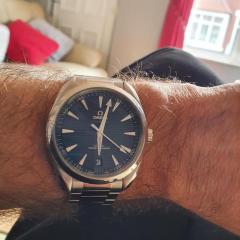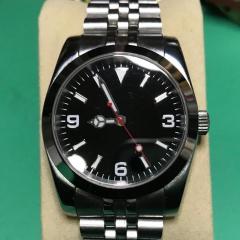Timex Electric contact wire
-
Similar Content
-
Recently Browsing
- No registered users viewing this page.
-
Topics
-
Posts
-
I read a lot about the quality (or lack thereof) of Seiko's 4R, 6R, 8L movements...or more specifically the lack of regulation from the factory. Especially when compared to similar priced manufactures using SW200's or ETA's. I thought I'd ask those more in the know, do the 4R's and 6R's deserve their bad reputation, is it fairly easy for someone with minimal skills (or better yet a trained watch mechanic) to dial in these movements to a more acceptable performance. For background I spent more on a 1861 Speedy years ago, expecting that the advertised 0-15s/d would probably perform more like 5-7s/d. In reality it's been closed to 2-4s/d.
-
@ChrisInOz your not Chris as in Clickspring are you?🤪 looks similar to some solutions I have seen him do. Tom
-
Potentially not the right place to post this and it's one of those where I'm not looking for a solution but rather thought you'd like to see it... Picked up a sketchy looking 6105-8000 the other day, the dial on which I've never seen the likes of before... The paint has literally solidified and lifted away from the dial in places, I'm some parts completely (and has been touched up with a matte black). I showed it to someone who works on and has a healthy obsession with these things - they told me they've seen this before on less than a handful of old Seiko dials, and think it's caused by water sitting on the sides and corrosion. It's quite a mess, but at least most of it is still there! Not sure about that relume either, though I should add I went to this eyes wide open price wise and the rest of the watch is good. Pics:
-




.thumb.jpg.19a9c4ff164d78d516aa9f05a063752b.jpg)



Recommended Posts
Join the conversation
You can post now and register later. If you have an account, sign in now to post with your account.
Note: Your post will require moderator approval before it will be visible.